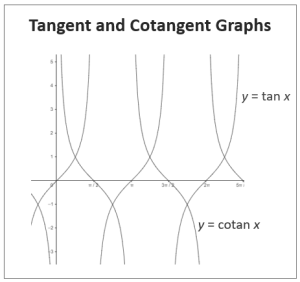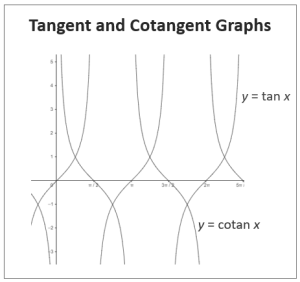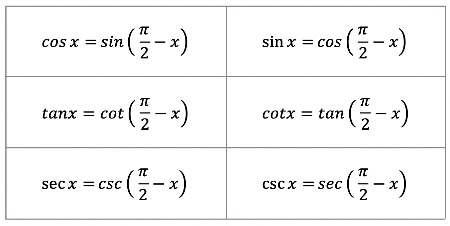This Cofunction Calculator is about trigonometry. Six functions describe the relationships between the sides and angles. Because they are interconnected, we group them into pairs: sin and cos, tan and cot, sec and csc. So, our calculator will explain what they are and how you can calculate them.
Also, you will learn about trigonometric functions and their use in geometry, 45 45 90 triangle calculator, 30 60 90 triangle calculator. For more geometry and trigonometry related posts and questions, as well as other math articles.
Take a look other related calculators, such as:
- Phase shift calculator
- Power reducing formula calculator
- Probability calculator 3 events
- Segment addition postulate calculator
- Fundamental counting principle calculator
- Condensing logarithms calculator
- Population density calculator
- Perimeter Calculator
What is a cofunction? Cofunction definition
A cofunction is a trigonometric function where the complement value is equal to the value of the given trigonometric function of the angle. The definition of cofunction in math refers to trigonometric functions. For example, we can say that sine and cosine are mutually confusing.
The same theory applies to both secants – cosecants and tangents – cotangents. Writing a function helps solve a trigonometric equation in terms of its cofunction. For instance, the simplest example is the equation where \sin A = \cos B .
In fact, a cofunction is a type of function that performs two different tasks. For example, a cofunction can calculate the area of a rectangle and the perimeter of a rectangle.
Trigonometric functions
Among the ancient Greeks, the word “trigonometry” means “three,” and the word “gon” means angle. If you are interested in the length of the side of a triangle, its angles, and its surface, knowing trigonometry will undoubtedly help you, and answer to all of your questions.
Trigonometric functions include six essential parts: sine, cosine, secant, cosecant, tangent, and cotangent. Their domain input value is the angle of a right triangle, and the numerical response is a range. Further, the trigonometric function f (x) = \sin \theta has a domain whose angle θ is given in radians or degrees and a range of [-1, 1]. We also have a range and part of other functions. Similarly, we have a domain and a range of all other functions.
Trigonometric functions and their identities are the ratios of the sides of a right triangle. Use the sides of a right triangle to calculate the values of sine, cosine, tangent, secant, cosecant, and cotangent. The sides of a right triangle are the vertical side, the hypotenuse, and the base.
The cofunction graphs: sin and cos, tan and cot, sec and csc
The sine and cosine (sin and cos), tangent and cotangent (tan and cot), and secant and cosecant (sec and csc) are six trigonometric functions.
So, each pair has a “basic” function and a function with the same name to which you add the prefix “co.” For each, we say that one is a cofunction of the other. Further, below we will compare the graphs of the functions in the rights and explain their similarities.
Sin and Cos
Firstly, sine and cosine are trigonometric functions which we use to calculate the angles of the triangle. You can use it to find the length of the side of a triangle in geometry. The unit of measurement is the radian. Sine is the ratio of the size of the opposite side to the length of the hypotenuse.
The paths are the same in the range of 0 to 90 degrees – sine from 0 to 90 and cosine from 90 to 0.

Tan and Cot
Secondly, we can explain tan and cot graph. We can say tangent is a proportion of the opposite side to the adjacent side of a right triangle.
On the other hand, the cotangent is a proportion between the adjacent and opposite sides of a right triangle. If you follow the tangent curve from 0 to 90 and the curve of the cotangent from 90 to 0, you can see that they are following a similar path.

Sec and Csc
Thirdly, we have the sec and csc functions example. Secant and cosecant are the reciprocal functions of cosine and sine. Secant is the ratio of the hypotenuse length to the adjacent side of a right triangle.
On the other hand, cosecant is a proportion between the size of the hypotenuse to the length of the opposite side of a right triangle.

Cofunction Identities in Degrees table
The system comprises three identities, each of which includes two trigonometric functions.
- The first identity, sin(x)cos(y), can be found by drawing a line from the origin to the point (x,y) and then finding the point on the line, which has the same x-coordinate as the point (x,y). Therefore, this point is the point (x’,y’), and the identity can be found by taking the sine of x’ and the cosine of y’.
- The second identity, cos(x)sin(y), can be found by drawing a line from the origin to the point (x,y) and then finding the point on the line which has the same y-coordinate as the point (x,y). So, this point is the point (x’,y’), and the identity can be found by taking the cosine of x’ and the sine of y’.
- The third identity, tan(x)cot(y), can be found by drawing a line from the origin to the point (x,y) and then finding the point on the line which has the same y-coordinate as the point (x,y).
\sin (90 - x) = \cos x \leftrightarrow \cos (90 - x) = \sin x
\tan (90 - x) = \cot x \leftrightarrow \cot (90 - x) = \tan x
\sec (90 - x) = \csc x \leftrightarrow \csc (90 - x) = \sec x
Cofunction Identities in Radians table
With a math and science focus, this table provides a concise and straightforward way to identify the cofunction identities in radians. Further, it shows how to find the cosine and sine of a given angle in radians.

How to find the cofunction: Cofunction Identities
You have probably heard of the term “cofunction” before, but do you know what it means and how it can benefit you. This function is a “reciprocal” function or an inverse function in our calculator. To find a function, you need to know the reciprocal value of the function.
We can take the example that the function configuration “x + 1” is equal to “1 / x”. In the following steps, you will find the function you are looking for. First, you need to find the function equation and write it in its standard form. Second, if the equation is “x + 1 = 1”, you need to simplify the equation by dividing it by “x + 1 “. In the end it will give us that” 1 = 1 “, which gives us the answer that the function” x + 1 “is equal to” 1 / x “.
Moreover, identity configurations are derived to obtain identity sums and differences for sinusoidal and tangent functions. The identities of the structures are directly derived from the identity of the difference with the cosine. In short, Cofunctional identities represent the relationship between trigonometric functions. Make sure to see this Sum and Difference Identities Calculator.
Trigonometric cofunction identities are a set of formulas that relate the trigonometric functions of complementary angles. Complementary angles are two angles whose sum is equal to 90 degrees, or π/2 radians. For example, 30 degrees and 60 degrees are complementary angles, as are π/6 radians and π/3 radians.
The six trigonometric functions are sine, cosine, tangent, cotangent, secant, and cosecant. Each of these functions has a cofunction that is defined as the function of the complementary angle. For example, the cofunction of sine is cosine, the cofunction of cosine is sine, and so on.
The trigonometric cofunction identities are as follows:
sin(θ) = cos(π/2 – θ)
cos(θ) = sin(π/2 – θ)
tan(θ) = cot(π/2 – θ)
cot(θ) = tan(π/2 – θ)
sec(θ) = csc(π/2 – θ)
csc(θ) = sec(π/2 – θ)
These identities can be derived using the definitions of the trigonometric functions and the fact that the sum of complementary angles is 90 degrees. For example, to derive the first identity, we start with the definition of sine:
sin(θ) = opposite/hypotenuse
Then, we draw a right triangle with angle θ and its complementary angle (π/2 – θ). The opposite side of θ becomes the adjacent side of (π/2 – θ), and the hypotenuse is the same for both angles. Using the definition of cosine, we can write:
cos(π/2 – θ) = adjacent/hypotenuse
Substituting in the values we found for opposite and adjacent, we get:
cos(π/2 – θ) = opposite/hypotenuse = sin(θ)
Similarly, we can derive the other five cofunction identities by using the same method and substituting in the appropriate trigonometric functions.
Trigonometric cofunction identities are useful in simplifying trigonometric expressions and solving trigonometric equations. For example, if we have an expression that involves both sine and cosine, we can use the identity sin(θ) = cos(π/2 – θ) to rewrite it entirely in terms of either sine or cosine.
Example: using the Cofunction Calculator
Through a practical example, we will show you how our calculator works. Let’s say you decided to decorate your room. More precisely, your goal is to repair the floor to replace the tiles with parquet. However, if your room is not a perfect measure, it is not a regular rectangle. You will need a cosine of 55 degrees and a cotangent of 40 degrees to get results.
We assume that you cannot remember the formula from trigonometry for cosine and cotangent. For these reasons, this calculator is a great solution to get the desired result as soon as possible with a simple entry of numbers.
Everything seems much simpler when you have a function calculator. Your first task is to choose the function you have. The example we have given will be cosine, whose notation is cos(x). The next thing you need to do is go to the field below and contain the corner. Enter value of angle measure u = 55° in this field, and after this step, our cofunction calculator will give you a solution.
The same procedure is for the second case. You will only select the cotangent whose designation is (cot (x)) and enter 30°. In conclusion, this calculator is very light and easy to use if you know the values.
FAQ
How to find cofunction?
The cofunction demonstrates the relationship between sine – cosine, tangent – cotangent, and secant – cosecant. The value of a trigonometric function of one angle has the same result as the value of the cofunction of its complement.
What is the Cofunction of tan?
We can express the cofunction of tan as tan (90 – x) = cot x or cot (90 – x) = tan x.
How do you find the Cofunction of a CSC?
You can find the cofunction of a csc like sec (90 – x) = csc x.
How do you prove Cofunction identities?
You can find cofunction identities proof by constructing an equivalent equation with an equivalent set of variables. For example, the following equation is valid for all possible values of x and y: x = y + 1. By substituting the variable y with the variable x, the cofunction identity has been converted to an equivalent equation.
What is the Cofunction Theorem?
This theorem says that any trigonometric function of the acute angle is equal to its cofunction of the complementary angle.
